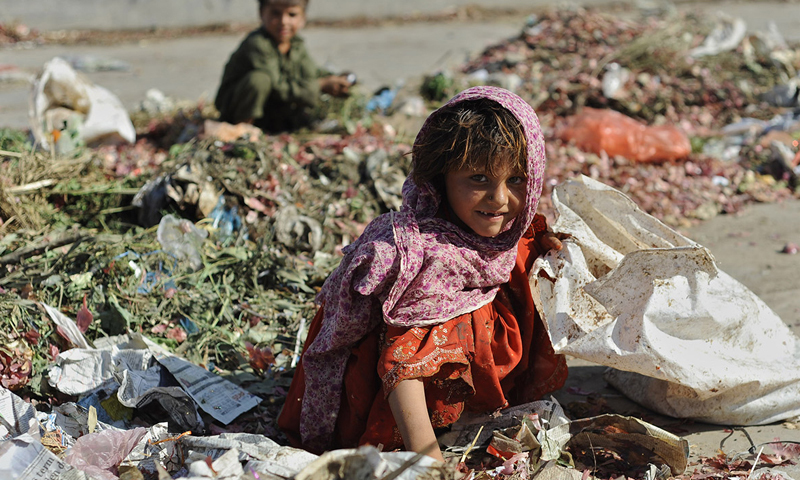80pc of Pakistan’s poor live in rural areas, says World Bank report

ISLAMABAD: Rural areas in Pakistan remain much poorer than urban areas and are far more disadvantaged in all respects of service delivery, and the present conditions show the decline in poverty has not reduced the urban-rural gap by much.
According to a World Bank report titled ‘State of Water Supply, Sanitation and Poverty in Pakistan’, Balochistan has by far the highest rural poverty rate, with more than 62 per cent of its rural population living below the poverty line. However, the gap between rural and urban poverty is the widest in Sindh at almost 30 percentage points. In contrast, the urban-rural gap in Punjab and Khyber-Pakhtunkhwa was 13 and 15 percentage points, respectively.
Karachi, Lahore account for almost as many poor people as the 10 poorest districts do
The report said that the poverty head count rate in rural Pakistan was twice as much in urban areas — 36pc versus 18pc — and the gap had remained virtually unchanged since 2001-02. Combined with the slow pace of urbanisation — only about 35pc of the country’s population lived in urban areas in 2014 — this gap indicated that 80pc of Pakistan’s poor continued to live in rural areas.
Rural households, it said, faced a substantial disadvantage in virtually all aspects of service delivery. Nationally, the rural net enrolment rate was 13 percentage points lower for primary school and 11 percentage points lower for middle school than in urban areas. For girls, these gaps stood at 17 and 14 percentage points, respectively. The rural female literacy rate, at 28pc, was also less than half of that in urban areas.
According to the report, rural children are 8.5 percentage points less likely than urban children to have adequate immunisation by three years of age, and rural women are 10 percentage points less likely to receive prenatal care, 28 percentage points less likely to give birth in a facility or hospital, and 12 percentage points less likely to receive postnatal care. Rural households are also far less likely to have access to key utilities. They are 15 percentage points less likely to have an electricity connection and 63 percentage points less likely to have a natural gas connection than urban households.
The report noted that districts varied widely in poverty, with the richest district Abbottabad at a headcount rate of 5.8pc and the poorest district — Washuk in Balochistan — at 72.5pc. Much of this variation reflected differences in poverty across provinces. The vast majority of the 40 poorest districts were in Balochistan, followed by Sindh.
However, the report added, only three districts each in Punjab and Khyber-Pakhtunkhwa fell in this set, and they were not among the poorest in the group. Not a single district in Balochistan was among the richest 40, and only Karachi and Hyderabad in Sindh fell in this set. The divide between Khyber-Pakhtunkhwa and Punjab in the north and Sindh and Balochistan in the south was apparent and quite stark.
It also found that districts that include large cities like Lahore, Rawalpindi, Faisalabad, Gujranwala, Sargodha, Sialkot, Multan, and Bahawalpur had much greater within-district inequality than other districts.
Taking population into account, a large share of Pakistan’s poor lived in well-off districts in Punjab and Sindh, particularly Karachi, Faisalabad, and Lahore, it said.
Karachi, for example, was the third-richest district in Pakistan in 2014-15, but despite its low poverty rate of 8.9pc its large population share meant that 2.5pc of the country’s poor lived there. Similarly, Lahore — the sixth-richest city — was home to 2.2pc of Pakistan’s poor. Together, these two cities accounted for almost as many poor people as the 10 poorest districts, where poverty rates are six or seven times higher.
Published in Dawn, November 11th, 2018













































